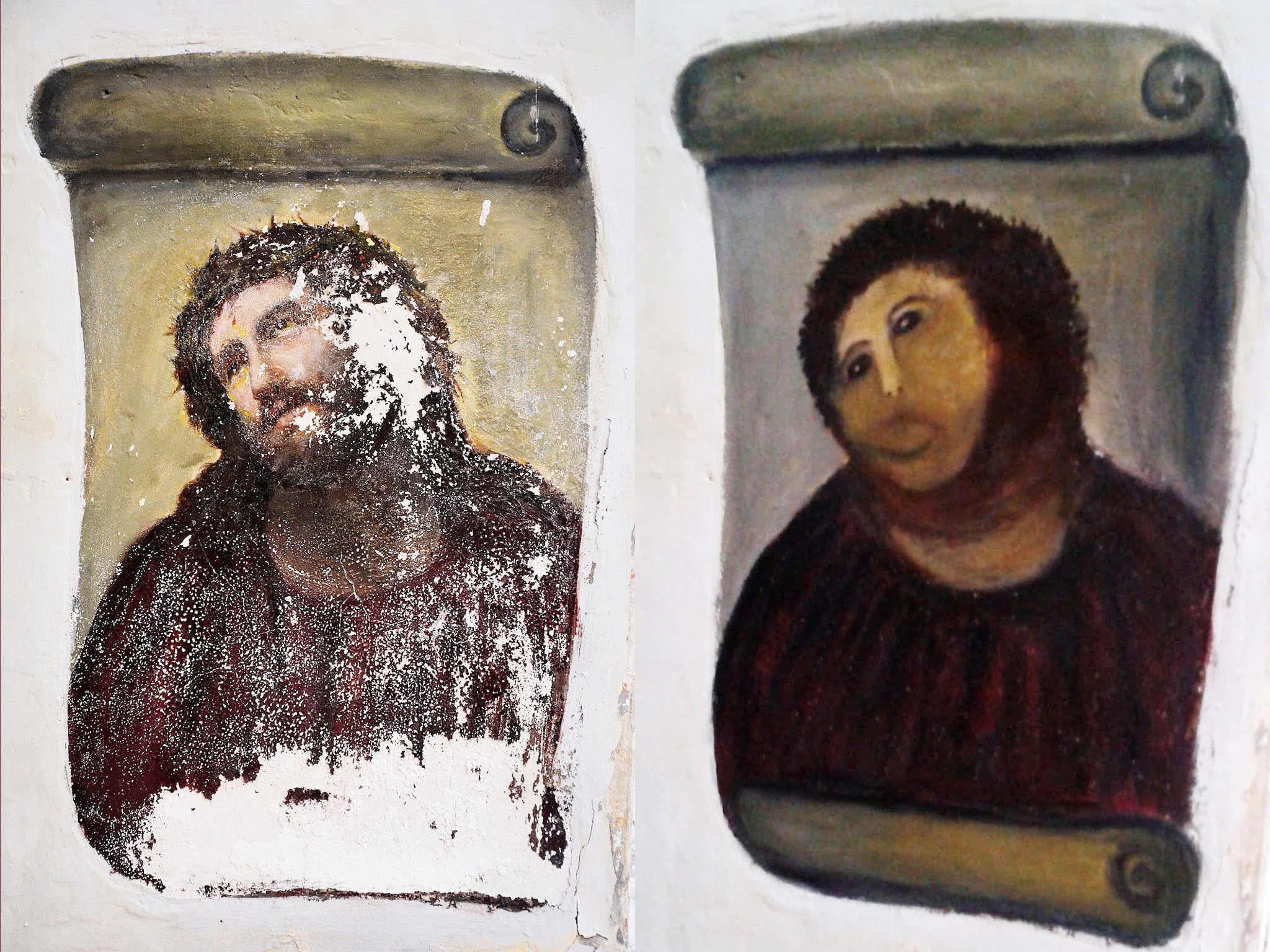So bad it was brilliant: Botched fresco restoration answers Spanish town’s prayers with tourism boom
Monkey-faced Christ found fame online, and whole village has reaped the benefits

Your support helps us to tell the story
From reproductive rights to climate change to Big Tech, The Independent is on the ground when the story is developing. Whether it's investigating the financials of Elon Musk's pro-Trump PAC or producing our latest documentary, 'The A Word', which shines a light on the American women fighting for reproductive rights, we know how important it is to parse out the facts from the messaging.
At such a critical moment in US history, we need reporters on the ground. Your donation allows us to keep sending journalists to speak to both sides of the story.
The Independent is trusted by Americans across the entire political spectrum. And unlike many other quality news outlets, we choose not to lock Americans out of our reporting and analysis with paywalls. We believe quality journalism should be available to everyone, paid for by those who can afford it.
Your support makes all the difference.Though she became a laughing stock the world over a year ago for her botched attempt at restoring a fresco in a 16th-century Spanish church, it turns out there is no such thing as bad publicity for Cecilia Giménez.
As a devotee of the Misericordia Sanctuary in Borja, the once sleepy historical town of 5,000 about 300km north-east of Madrid, the amateur painter took pity on a flaking late 19th century fresco portraying Jesus Christ in a biblical scene known as Ecce Homo, or Behold the Man.
But the 81-year-old widow’s version was quickly nicknamed Ecce Mono – Behold the Monkey – when pictures of the fresco before and after her well-meaning but failed brushwork went global in August last year.
At the time, local authorities muttered about possible legal action against Ms Giménez, but now, they are likely to be thanking her.
A year on, the Misericordia estimates 57,000 tourists from all over Europe, Latin America, Australia, China and Japan have been to see the fresco and between them dropped some €50,000 (£43,000) in the collection box.
That compares with just 6,000 visits a year to the local religious art museum, one of more than 20 historical and cultural monuments in Borja. The donations have been used to employ attendants at the church and to fund the Sancti Spiritus foundation, which runs an old people’s home.
The visitors have also made cash registers sing in restaurants, cafés and cake shops, leading local businesses to see the very marketable brand on their hands. In October, a regional vineyard had launched a special Ecce Homo line of young wine from the recent harvest.
“After all that has happened, on balance it has been positive. This picture has been visited by many people from every country in the world,” Mayor Francisco Arilla said. “We’ve had a spontaneous advertising campaign which has done us proud in making the town known.”
As for Ms Giménez, although she hasn’t seen a penny of the donations her work has brought about, she is expected to reach a copyright deal later this month. She has also opened an exhibition of her work – including an Ecce Homo commissioned by another local vineyard – and a neighbours’ association has launched an international painting prize which bears her name.

“I haven’t wanted to make money or profit from what has happened,” Ms Giménez told the newspaper ABC, adding that she wanted 49 per cent of takings at the sanctuary to go towards people suffering from the same degenerative illness as her son. “I couldn’t understand why everyone was talking about me. I only tried to stop the fresco succumbing to damp, as it so often had,” she added.
Join our commenting forum
Join thought-provoking conversations, follow other Independent readers and see their replies
Comments